Just a note to my avid followers to share my readiness for winter. A lot of bucking and splitting to get to this point featuring two new Holz Hausens.
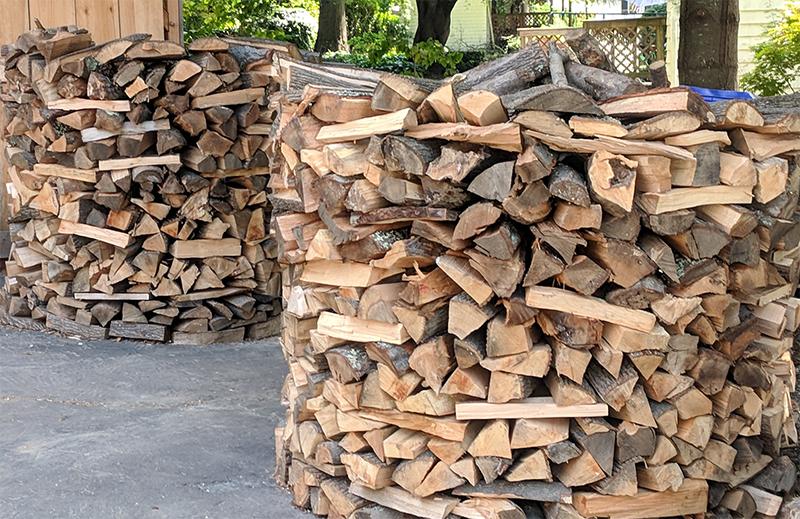

Just a note to my avid followers to share my readiness for winter. A lot of bucking and splitting to get to this point featuring two new Holz Hausens.

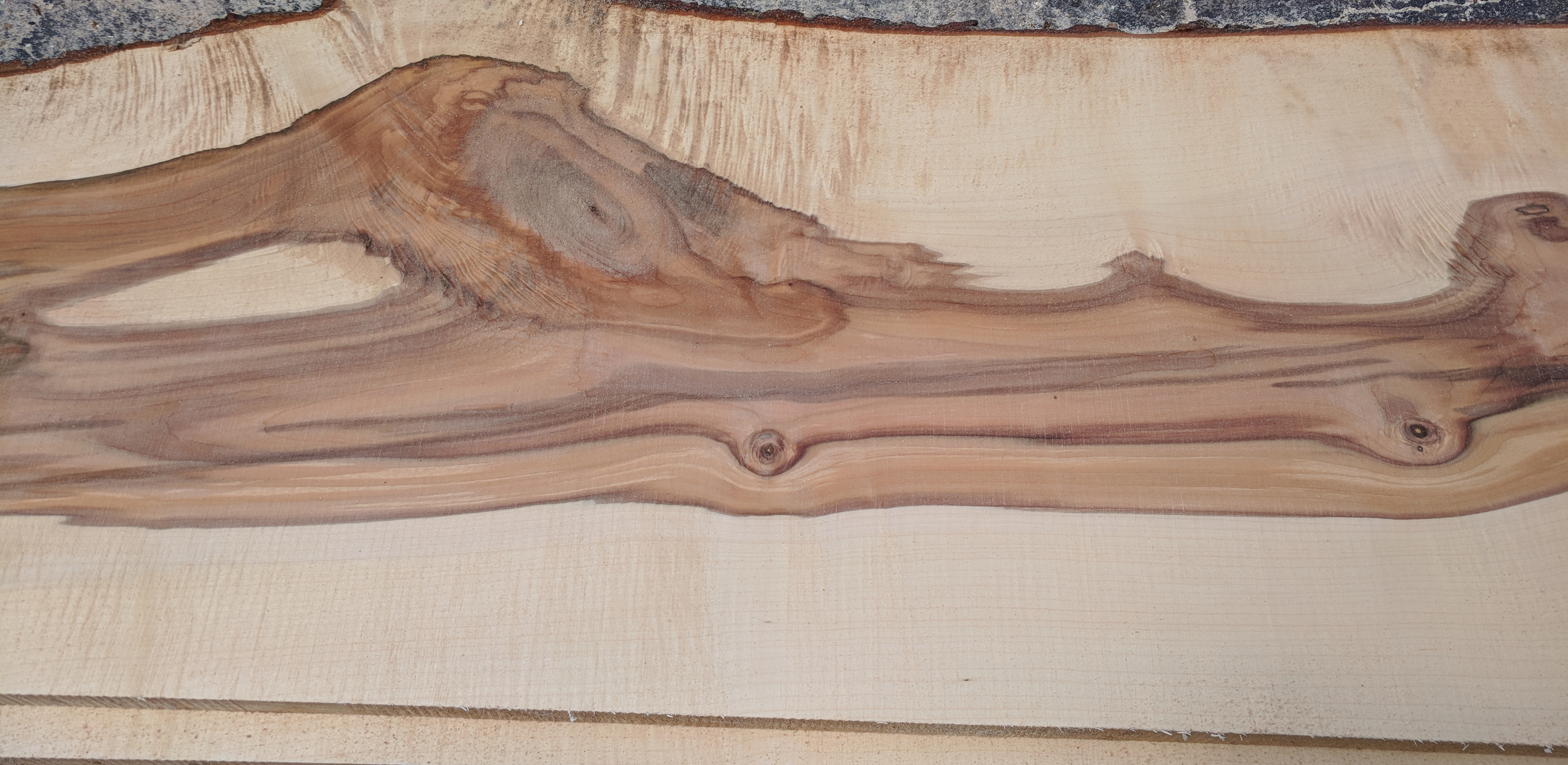
I’ve lived across the street from a WWI era elementary school for a decade now. The town has decided to tear it down and replace it. As a part of the process, they cut down all trees on the property.

Over the years, I have developed a habit of asking if I can have felled wood from storms or projects like this. In this case, the construction team obliged and gave me all of the trunks!

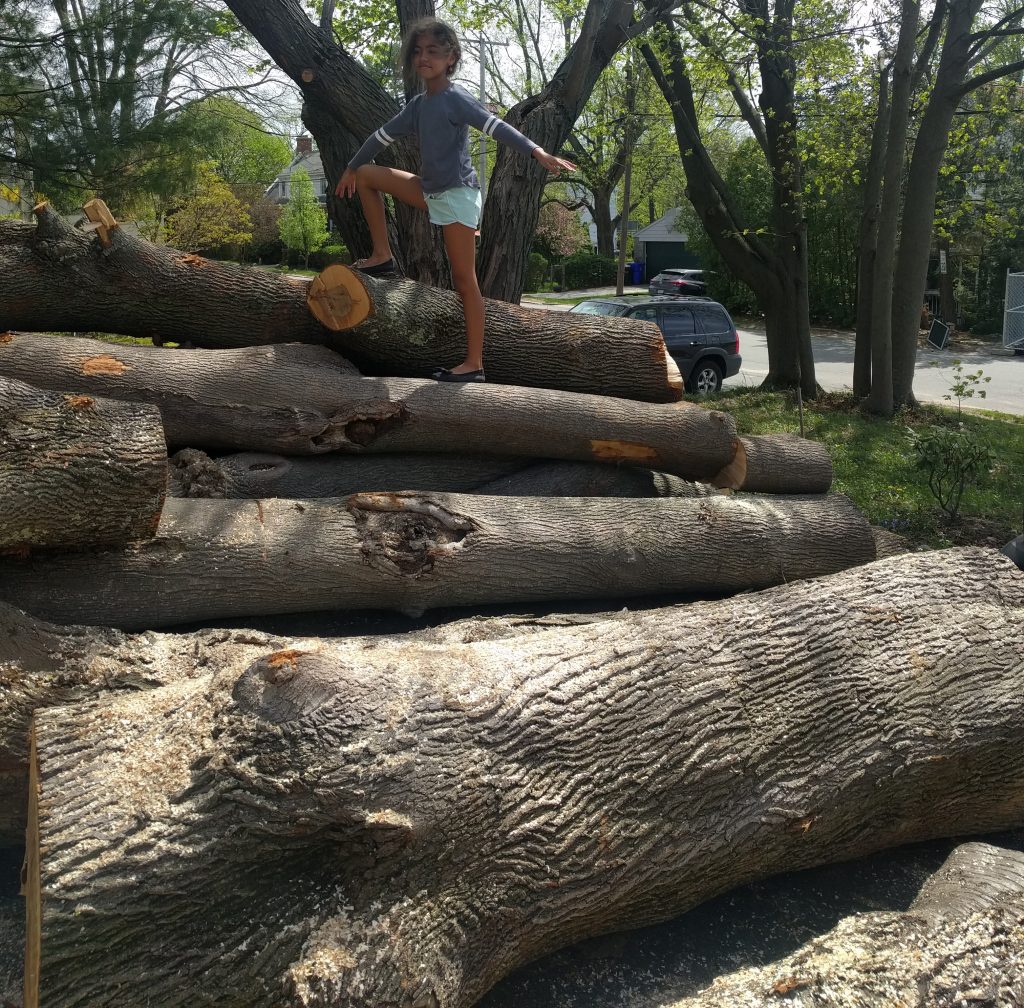
For a while, I bucked and split the wood for firewood, but some of the trunks had a higher calling – two nice sections of sugar maple, 14 foot in length and 24 inches in diameter and a Norway maple of similar length, 36 inches in diameter.
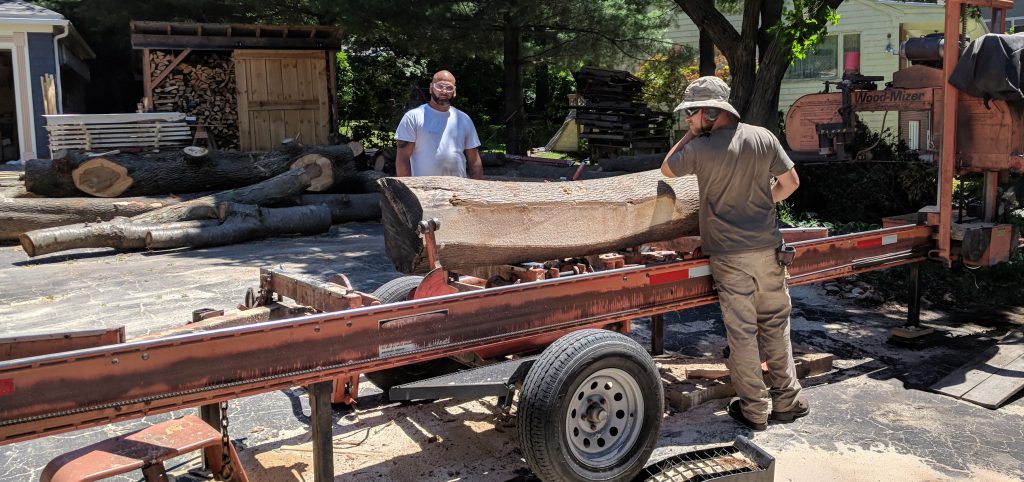
I brought in Rob Swanson from New England Portable Sawmill. Rob really knows his stuff and is a hard worker. We spent a full day milling boards out of the best tree trunks.The last trunk we did was the most impressive. There were many branches on the Norway maple and each revealed a curly figure near the crotches.
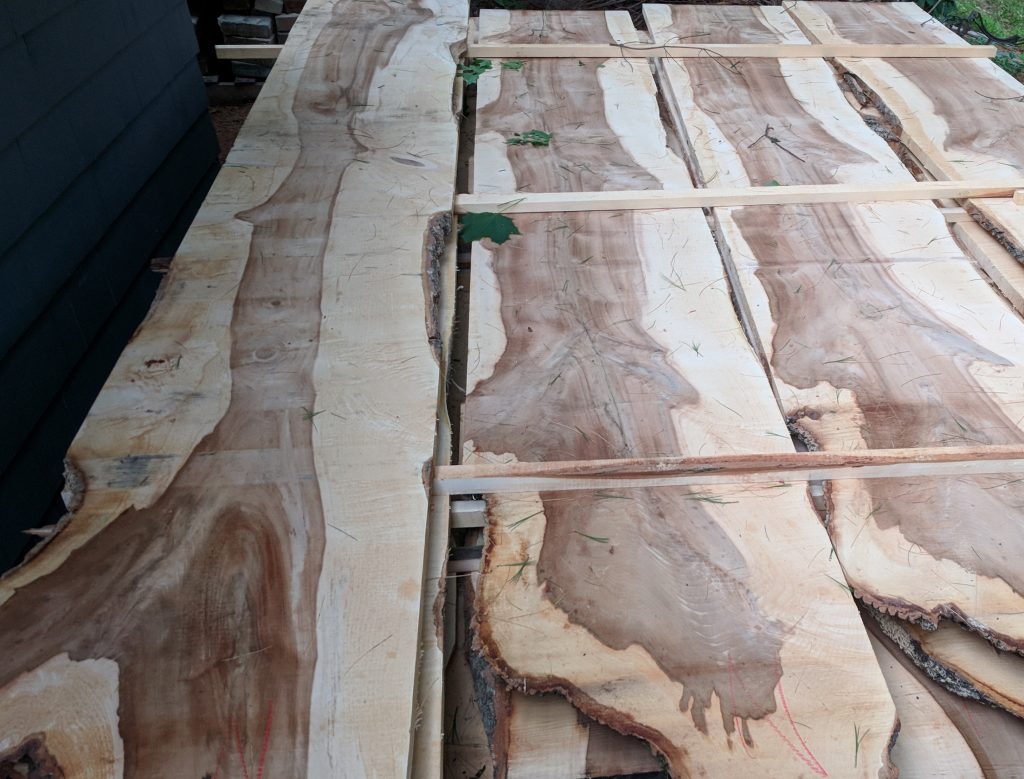

For now, the firewood shed is full with around 8 cords of firewood and the wood is drying out in this hot summer weather. Assuming 1 year per inch of thickness, the thinner pieces should be ready to work this winter. I have a few projects in mind:

I made this out of a piece of pear wood. Shaped it on the bandsaw and did some sanding by hand. Rough shaping with 50 grit and worked all the way to 500 grit. Oiled with olive oil.
A nice process and an interesting project for me in that it was completely unnecessary, totally unplanned and has no requirements other than it looking how I want it to.
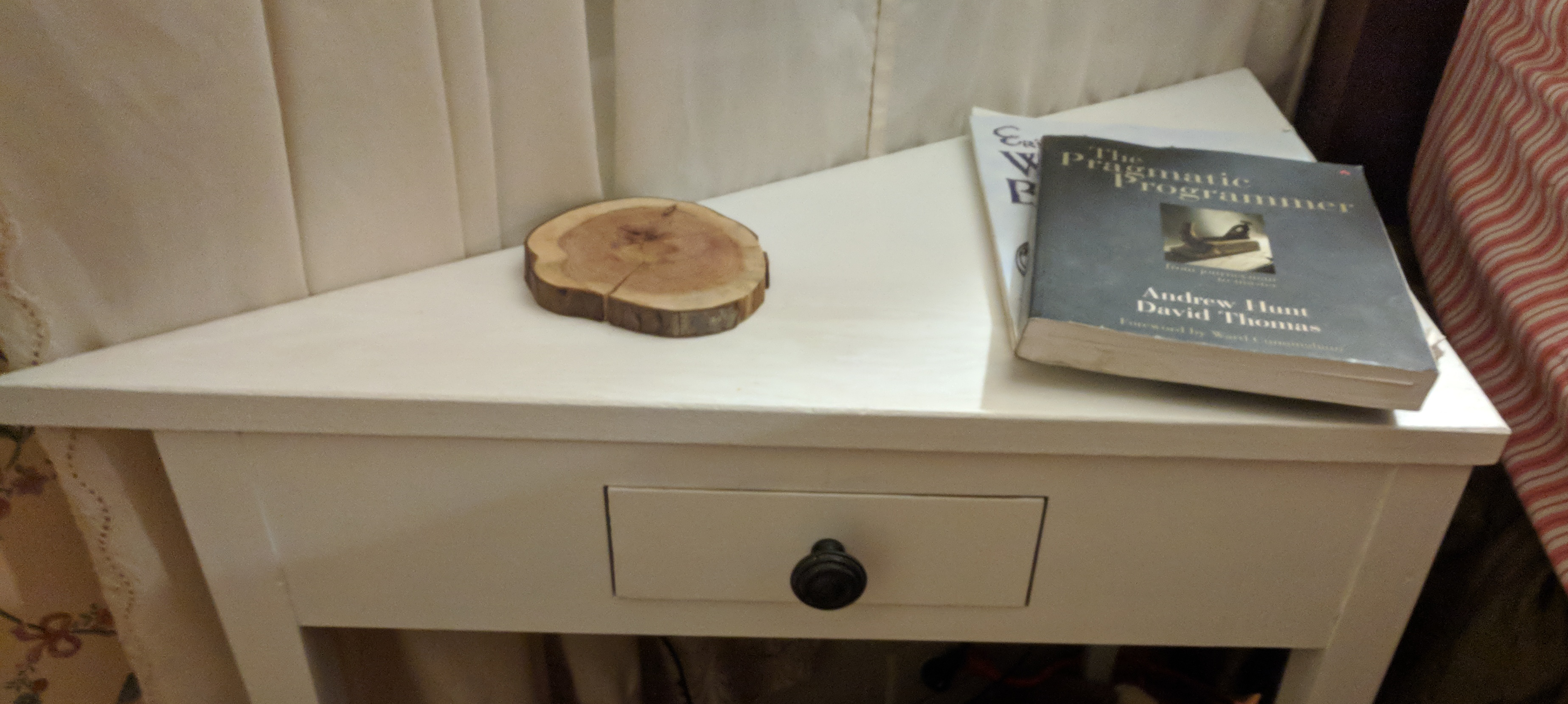
I bought an old house 10 years ago and, adhering to the advice of Tom Silva, focused any renovation or improvement work on securing the home from water and improving the mechanicals. It was prudent advice but it inferred that some of the more visually gratifying renovation projects were put off and as a result, we got accustomed to some less-than-ideal furnishings and, frankly, some ugly rooms.
After years of the aforementioned prudent renovations, it is finally time to fix some of the things that we can appreciate!
It’s always a little random when I decide to fix something and this was no exception. Let’s start with the problem: I don’t have a nightstand. So I didn’t have a nice place to charge my phone and store incidentals like books and headphones or a cup of tea. There are lots of nightstands available on the market but the wall behind my bed is shaped like this \_____/ so I needed an odd-shaped table. Since I needed a custom solution, I had the opportunity to make it special and did not hold back in this project, opting for an integrated USB charging hub tucked in the back!
One element to my advantage is that three-legged objects never tip or rock. I used “found” materials for the project — ended up building the whole thing using parts from discarded furniture that I collected over the years. The wood does not match (there are parts made from maple, oak and poplar) but it is painted so that doesn’t matter.
The legs were joined to the apron using mortise and tenon joinery. One of my favorite touches, from a woodworking perspective was adding a gentle taper to the legs. They are 5/4″ square at the top and 3/4″ square at the bottom.
In the end, I really like the utility of the piece. Here is a pic of it with the front drawer opened:
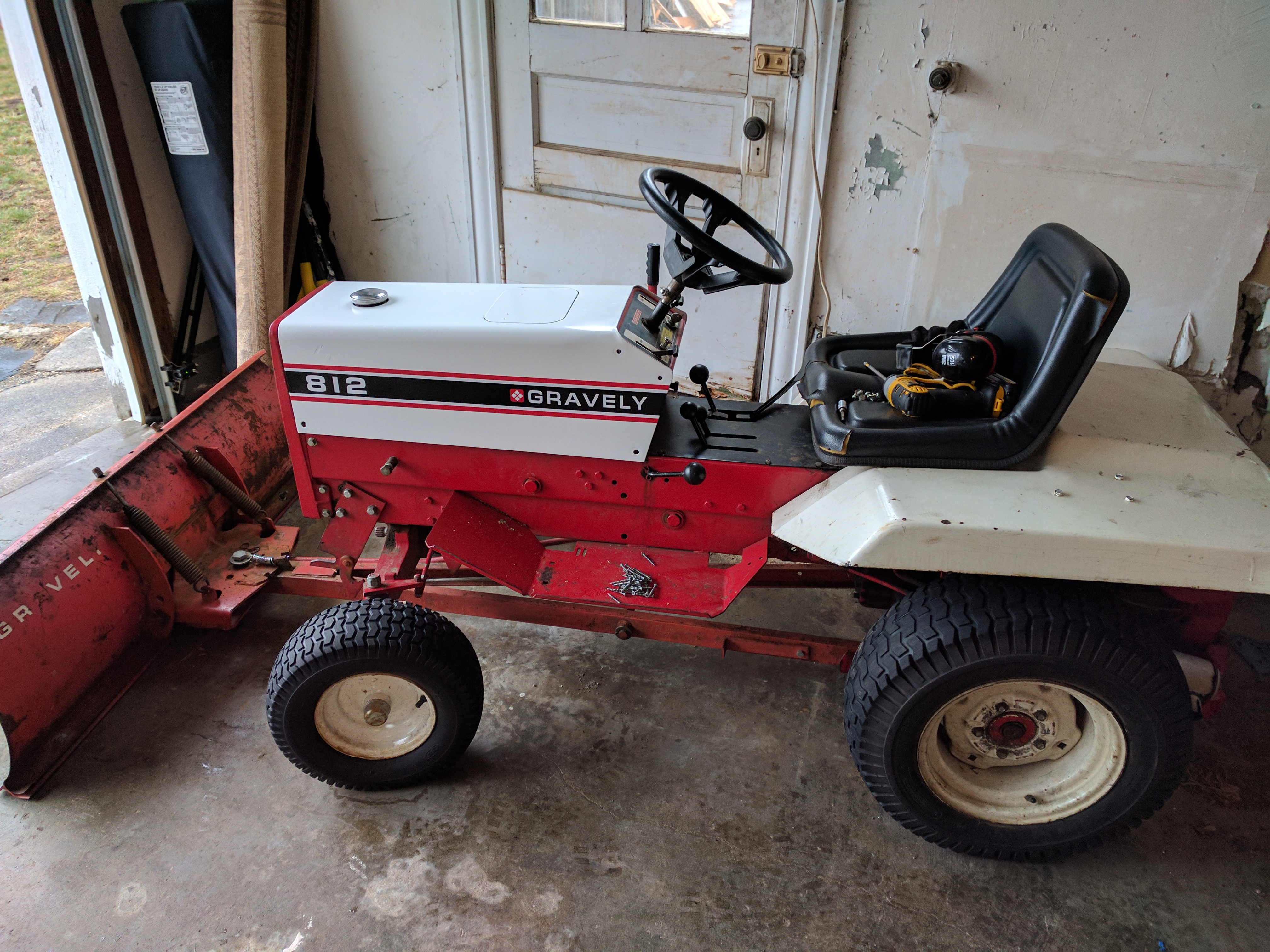
I’ve had a Gravely 812 for around 10 years now and I like her a lot. She is as old as me, built in 1973. She’s a brickhouse and even has a cigar lighter in the dash. She’s really jumpy when put in gear but there’s a few things about her that I really like:
I sometimes look at old cars and want to restore one. That’s a big job, but getting the gravely into better shape is a much more practical goal in that I already own one and I can restore a neglected part and resume using the tractor. There are limited parts and it really looks good when cleaned up.
Anyway, I took the hood off and cleaned, hammered straight, sanded, removed decals, painted and applied new decals that I ordered online.